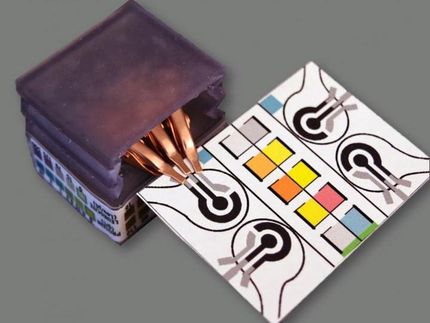A 'bionic nose' that knows
Advertisement
Both cancer cells and the chemicals used to make bombs can foil detection because they appear in trace amounts too small for conventional detection techniques. Tel Aviv University has developed the ultimate solution: a molecule that can magnify weak traces of "hidden" molecules into something we can detect and see.
Using molecular techniques in nanotechnology, Prof. Doron Shabat of TAU's Raymond and Beverly Sackler School of Chemistry has engineered new molecules that have the power to identify targets -- such as biomarkers in cancer, materials in explosives, or pollutants in water --even when present in miniscule amounts. Prof. Shabat's invention, like a bionic nose, can "sniff out" these trace molecules and amplify them tenfold, making them noticeable for doctors and crimefighters.
Details of Prof. Shabat's project appeared in a paper published in the journal Chemical Communication last year.
Fights Chemical and Biological Threats In Our Bodies and Environment
Prof. Shabat, a bioorganic chemist, plans to develop the technology so that it amplifies signals millions and billions times stronger than they are. "We are developing a molecular system that amplifies certain events," says Prof. Shabat. "That way we'll be able to respond faster to medical, security and environmental threats. In effect, our device can amplify just about any chemical system that has a certain kind of reactivity."
"It has the potential to help doctors diagnose diseases -- those with biomarkers, and enzymatic activities that are compatible with our molecular probe," says Prof. Shabat. "The long list includes a few kinds of cancer, as well, including prostate cancer. But it also has applications for testing for impurities in water. It has both biological and non-biological applications."
A Track-and-Trace Solution
Prof. Shabat's invention is a molecular sensor that acts in a solution. A chemist would add trace amounts of the test material from the field -- a spoonful of contaminated drinking water, for example -- into the solution and would simply see if the color of the solution changes. If so, the targeted material -- the cancer, or explosive, or pollutant -- is present.
As of now, Prof. Shabat's is a unique solution. The prototype is ready, and Prof. Shabat plans to use it to "amplify" problems around the world to improve healthcare, safety, and security. Some of the research behind the new invention was done in collaboration with the Scripps Research Institute in San Diego.





















































